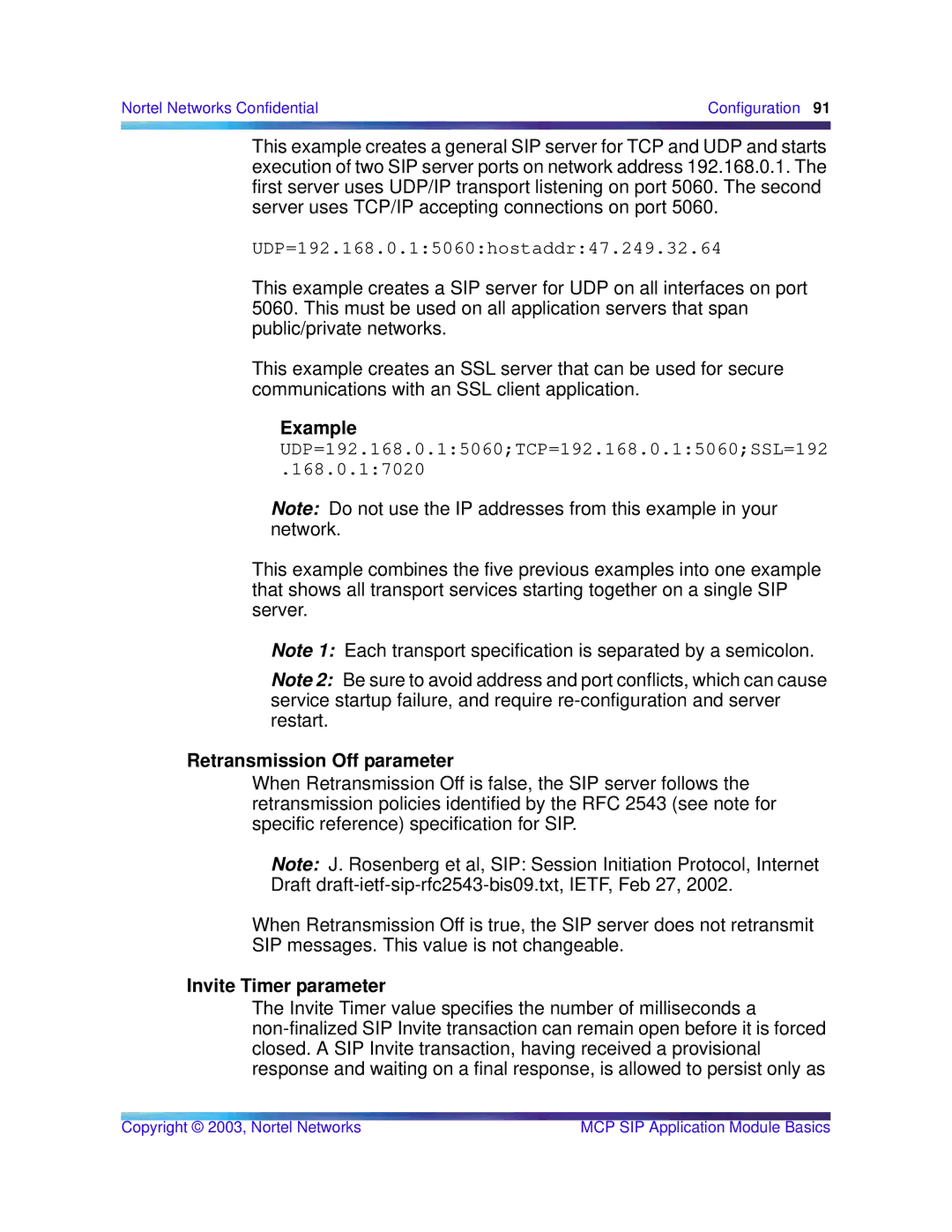
Nortel Networks Confidential | Configuration 91 |
|
|
This example creates a general SIP server for TCP and UDP and starts execution of two SIP server ports on network address 192.168.0.1. The first server uses UDP/IP transport listening on port 5060. The second server uses TCP/IP accepting connections on port 5060.
UDP=192.168.0.1:5060:hostaddr:47.249.32.64
This example creates a SIP server for UDP on all interfaces on port 5060. This must be used on all application servers that span public/private networks.
This example creates an SSL server that can be used for secure communications with an SSL client application.
Example UDP=192.168.0.1:5060;TCP=192.168.0.1:5060;SSL=192
.168.0.1:7020
Note: Do not use the IP addresses from this example in your network.
This example combines the five previous examples into one example that shows all transport services starting together on a single SIP server.
Note 1: Each transport specification is separated by a semicolon.
Note 2: Be sure to avoid address and port conflicts, which can cause service startup failure, and require
Retransmission Off parameter
When Retransmission Off is false, the SIP server follows the retransmission policies identified by the RFC 2543 (see note for specific reference) specification for SIP.
Note: J. Rosenberg et al, SIP: Session Initiation Protocol, Internet Draft
When Retransmission Off is true, the SIP server does not retransmit SIP messages. This value is not changeable.
Invite Timer parameter
The Invite Timer value specifies the number of milliseconds a
Copyright © 2003, Nortel Networks | MCP SIP Application Module Basics |
